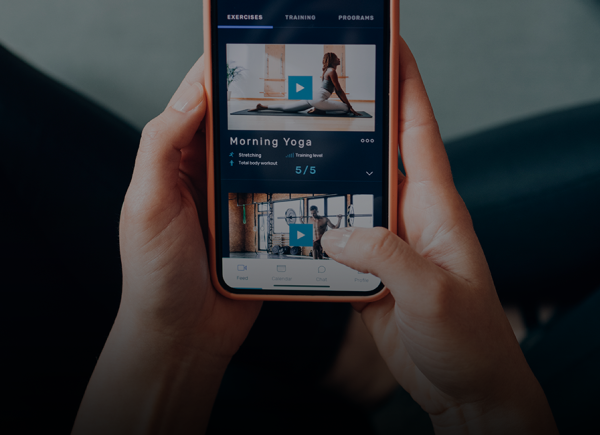Ever wonder what VCs expect? Or what keeps them up at night? VC Stephen Bernardez from ONSET Ventures answered these questions and much more at our most recent Envestnet | Yodlee Incubator Bootcamp. This was an opportunity to ask a VC questions without being judged. Here’s how the Q&A session unfolded.
Q: Which VC firm should I pitch to?
A: Search for VCs with the right stage, industry and geographic focus relevant to your company. Get to know their approaches, styles, and preferences. Go to each VC firm’s website see who you know there and what they’ve invested in. Investor connections are made on a person-to-person basis, so you need to find the GP who’s focused on your area. Crunchbase and AngelList can give you valuable firm level information, but you’ve got to get beyond the firm level and down to the individual level.
Q: How do I know if a VC firm is a good fit for us or not?
A: With FOMO, everyone wants to see deals in their space even if they aren’t going to invest in you. To make your fundraising process efficient, you should filter VCs by how many recent deals they did in your stage and space. At ONSET, our current (sixth) fund is $200 million in size and we are looking to do first institutional investment in seed and Series A software and medical device companies. We don’t typically write $50K checks, although we have gone as low as a $250K convertible note. Our sweet spot is a two to three-million-dollar check, so that’s mostly part of a Series A. We also don’t typically write $25 million initial checks. Most VC firms’ strategies are built around adding value at a particular stage; do your homework to see if the firm has a reputation for adding value at your stage.
Q: How many VCs do I need? How many should I approach?
A: Raising money can be a full-time job, and if you want to do it successfully, you may have to approach a lot of people. The goal is to get an efficient introduction to the best person within the target firm so you don’t spend too many cycles. However, looking at the numbers can be daunting. Of the 2,000 inbound inquiries we get each year, we probably meet with 200 and invest in four. It may take meeting 15 to 20 active investors to get a term sheet that you like. You first need a lead investor and depending on who that firm is, you may not need another investor for that round. Once you’ve got a lead, it’s much, much easier, and that’s where you need to spend all your time focusing.
Q: What should you say when VCs ask, “How may I help you?”
A: There are three things you can ask for: 1) A check. Why waste time with a VC if you’re not going to ask for a check? Make every pitch a fundraising pitch or a precursor to a fundraising pitch. 2) In your mind, you should always be ready to say, “This is how we’re going to grow our company. We’ve got to ramp sales or lead gen or product development [insert what you need here], and we’d love to have you help us with that.” Screen the VC on their willingness to help. 3) Recruiting is another key area you can ask for help with. Tell the VC you’re really looking for someone who's great at x, whether that’s inside sales or marketing or something else. The quid pro quo is that you keep the VC informed of how you’re doing on your metrics and put those that help at the front of the queue when you’re ready to raise.
Q: What are the most important things to you in funding a startup?
A: The most important thing is getting to know the founders. You can’t get to know a startup team through email, no matter how good the pitch deck is. The most effective approach is for you to get an introduction to us from somebody who already knows us. Founders can start by looking at our team and portfolio companies at Crunchbase, and then use their network on LinkedIn to get a warm introduction. When we meet with you, we’ll want to know that you’re addressing a huge market problem, why you’re the right team to address the problem, and how your product will dominate that market.
Q: Can you describe the best funding experience you’ve had?
A: A leading candidate was Adaptive Insights. We helped put the commercial and technical founders together and then helped them incubate their idea in our offices for nine months to see if there was really a there there. We helped pull in additional financing over successive rounds and helped them build a SaaS business model. Business experimentation was the core of their approach, and that’s how they scaled from two smart guys to 450 employees and $100 million ARR.
Q: What keeps you up at night after you cut the check and invest in a company?
A: Achieving product market fit is the first real hurdle. Aligning technology with customer needs is not easy and requires diligent experimentation. The biggest challenge for us after product market fit is growth. The growth you need to deliver venture returns is astronomical. A trite rule of thumb to deliver venture returns is the T2D3 rule, where you want to see the company’s annualized revenue growth triple, triple, double, double, double. If the company can do that, they might get to $100 million revenue in year seven. Here’s what keeps me up: Is there anything stopping our company from achieving this type of growth? Do they have the right people on board? Did we miss the market because it either evaporated or we misunderstood it? How do we keep this company on a rocket ship in regards to hiring and customer acquisition?
Q: Do you read emails from entrepreneurs?
A: I’m happy to get an email blast, but it’s got to be real. If we’d had a conversation before, there were probably obvious metrics that you needed to hit. Sum those up and make your email succinct: Here’s how we grew the team, here’s our Minimum Viable Product evidence, etc. It can be really short. And then provide some visibility into your next round including when you’re planning to raise, how much, and to accomplish what milestones.
Q: What do you want to know when you meet with entrepreneurs?
A: All VC firms want to see a huge market. Yesterday’s billion dollar market now needs to be $5 or $10 billion. Next, what product market fit evidence do you have? What are the use cases? Customer feedback? How sticky does the solution seem to be? From a team perspective, we want to know the track record of your team, and about the success, you’ve achieved in a reasonably similar market, or with a business model close to the one you are proposing. For our firm, we have a strong focus on technical differentiation and who on your team can make this happen from a tech perspective? Who on the team knows how to acquire customers?
Q: Sometimes you go to a meeting with an investor and it went well, and then they don’t respond to your emails. How do you prefer to be approached in that type of situation?
A: We know it’s frustrating if there’s a lack of process clarity for entrepreneurs. That’s why our firm puts a timer on our response to companies. Here’s how it often goes with VC firms… You meet with a VC on a Tuesday and the VC firm has its weekly investment meeting the following Monday. The partner you met has to assess where your opportunity ranks amongst all the others they are considering and if your company is sufficiently ready for a deeper look warranting bringing you up for consideration in the partner meeting on Monday. Meanwhile, they’re balancing 20 other live opportunities. VCs want to maintain optionality, so they often don’t say no, but rather don’t respond. Weeks go by. We strive to respond promptly with either an invitation to pitch or a call saying “you’re not a fit for us now, and this is why.” We are happy to share feedback that you need to accomplish certain milestones, you need to hire certain people, gather customer reactions to a prototype, etc. If there’s a way to give you a hand, let us know, and let us know if you want to have more feedback on your presentation. Our approach has been to provide quick feedback because it improves the relationship with the entrepreneur in the long run, even if it’s a quick “no”.
Q: Should I take on venture debt?
A: Although non-dilutive, I don’t think startups should take venture debt until they know they can service that debt which means later stage companies. In general, banks like to lend when you don’t absolutely need the money to survive. Also, debt providers usually put in covenants which can restrict what you do with the money and ultimately your business.
Q: What is the valuation based on?
A: We don’t do DCFs at early stages although we do look at what typical company exits in your market look like. Working backward, we price deals based on the returns we need based on that guesstimate exit valuation, adjusted for risk. However, the market is probably the biggest determinant of pricing by stage. Later on, if you’ve got real revenues, then the valuation is really based on what growth looks like. The higher growth you can show, the better the valuation.
Q: What cap should I set?
A: A cap is an indicator of valuation. You can get yourself in trouble by putting the wrong cap on your notes. If it’s too high, it’ll be difficult to raise later on, and if it’s too low, you’ll be hurting yourself. When it comes to a convertible note (a loan that typically automatically converts into shares of preferred stock upon the closing of a Series A round of financing) or a SAFE (Simple Agreement for Future Equity), angels seem to have more appetite than VCs. Multiple convertible notes with different caps are a hassle for VCs to clean up.
Q: Would you invest in a foreign startup?
A: ONSET doesn’t have offices overseas and doesn’t invest outside the US. The laws here in the U.S. are fairly investor favorable, so it’s more attractive for us to invest in companies here. The risk is lower, and we’re always trying to manage our risk. Investing in foreign companies can cause issues. If there’s a lawsuit or an IP issue that involves the legal system, you would need counsel familiar with the laws overseas. There can also be tax implications for the limited partner, and that’s a headache we don’t want to deal with. In countries with strict currency oversight, repatriating investment gains can be a challenge. In general, early stage VCs want to be close to their portfolio companies so they can more easily provide assistance. Our firm prefers to invest in companies on the West Coast. Our approach is to provide operational assistance early on, where we work closely with companies, which is impossible to scale if we are on planes.
Q: Do I need to be an expert in compliance (fintech companies)?
A: You need to have somebody who is conversant with relevant regulations to keep product development between the rails, but you probably don’t need a rock star in compliance early on as long as you can answer fundamental customer compliance questions. If financial compliance is your core space, you probably already are or have an expert.
Q: What is the expectation with getting Series A capital?
A: For a full-on Series A round raise, I expect minimum viable product and strong indications of product market fit. I don’t expect you to have your business model totally figured out, but that’s what I expect the Series A money to help prove or de-risk. Series B is meant to refine and further scale the business model with investment in marketing and sales people. Each financing round should cover 12 months to operate the company and prove milestones with an additional 6 months to raise the next round. Thus raising 18 months of capital is prudent. Series A milestones include showing that you know how to acquire customers, you know how long it takes to get a customer, what the customer acquisition cost and payback is going to be, and what probable lifetime value of a customer could be.
Q: How much do VCs need to exit?
A: It depends upon VC fund size – smaller funds can be happy with a $50 million exit while large funds aren’t happy with anything less than a $250 million exit. It’s the CEO’s job to manage these diverse investors on his board. Later stage investors may put terms in their term sheets which can make it hard to exit early.
Q: What’s worth investing in, in 2017?
A: It feels like three-quarters of the software deals we see tout artificial intelligence as a key enabler or differentiator early in the pitch deck. Vertical apps aggregating previously proprietary data and providing insight to an industry by running machine learning on top of that data interest us. The more customers they get, the more data they get, the deeper their moat becomes. Security remains important, as there will always be criminals, but there seems to be too many companies in the space. Omni-channel vertical SaaS applications are hot. IOT, fintech, healthcare reinvention seem to be on the upswing.
Q: Any other trends we should know about?
A: Financing terms have been company friendly for a long time, and with the glut of capital available, now is a good time to be raising. VCs try to compete to have the cleanest term sheet possible. Few deals have participating preferred terms, especially uncapped participating preferred. From a liquidation aspect, it tends to be 1X. If you’re an entrepreneur with an idea to leverage financial transaction data, applications for our next cohort are now open. You can learn more here. Start the application on our F6S page HERE. Applications for Cohort 4 to be submitted by August 31st, 2017 deadline extended to Friday, September 8th, 2017.




